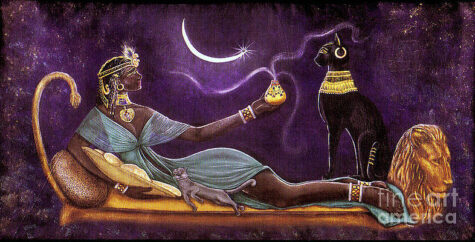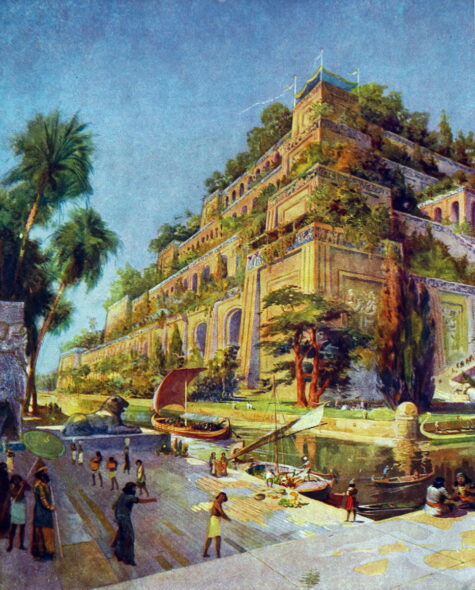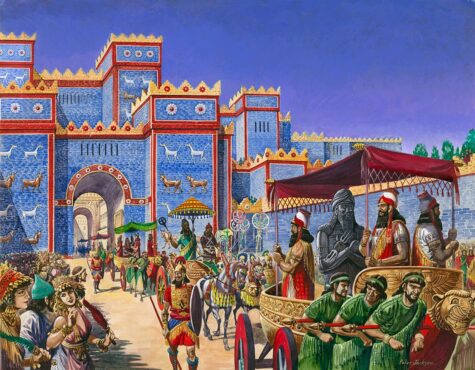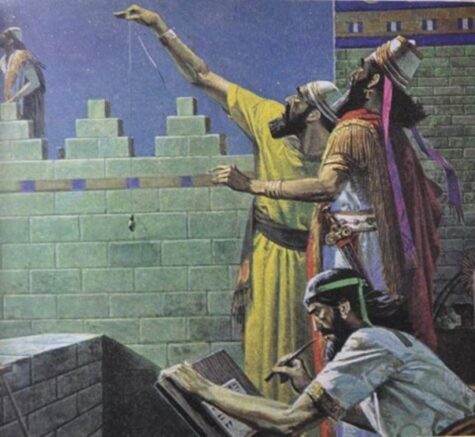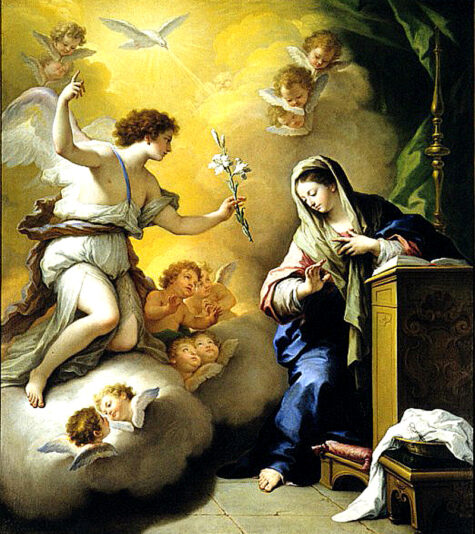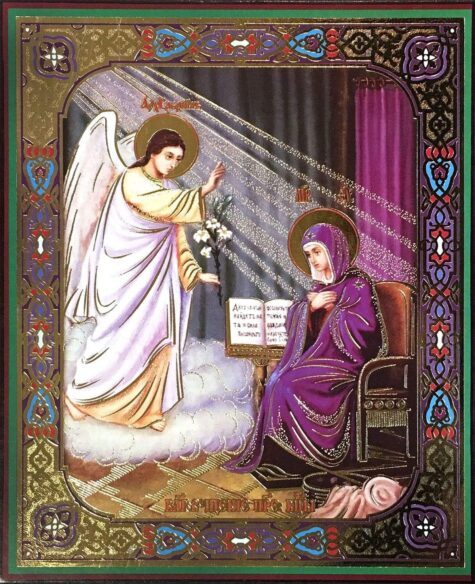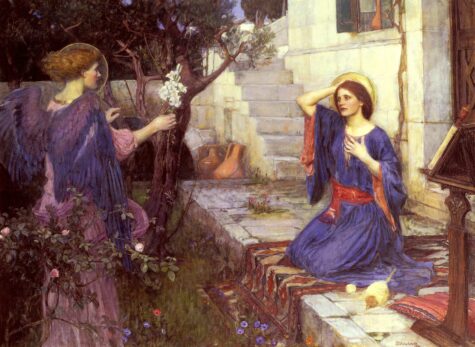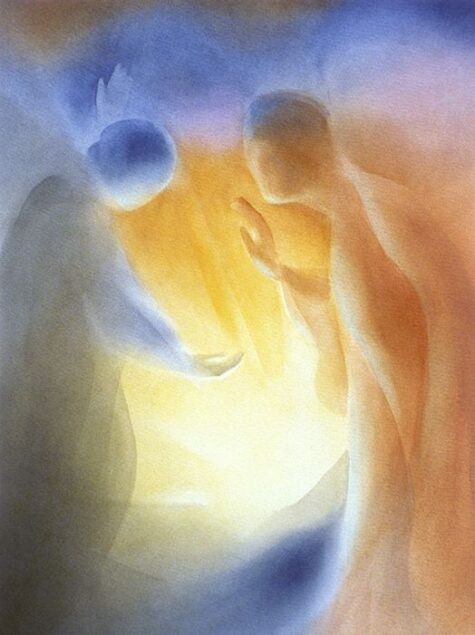Daily Archives: March 25, 2021
The thirteenth lunar day is generally counted as the thirteenth day from the new moon. More information on the Lunar Days can be found here: The Thirty Lunar Days.
According to European tradition, you should avoid undertaking most activities including health related endeavors today for it is not an optimal time to do so. Vedic traditions say otherwise, and you can expect to enjoy a lucky day especially when it comes to new beginnings, renewed relationships with people around you and generally a satisfying leisure time ahead.
- Symbol: Wheel.
- Other Symbols: A circle, a snake biting its tail. A wheel with a swastika inside.
- Meaning: Wheels rotate, movement continues.
- Stones and Minerals: Labyrinth stones, Hematite, Selenite, Opal, Ruby.
- Aromatherapy: Neroli
- Chakra Activation: The Hara chakra is active.
About The Swastika
The Swastika mentioned here symbolizes movement, primarily – blood, intestinal peristalsis, circulation of qi (prana) energy through the channels of our body. The swastika, going clockwise, symbolizes the eternal movement, for example, the movement of the sun, blood circulation, intestinal peristalsis, movement of energy through the channels of our body.
Overall Forecast
This is a day to renew the vital energy of your life. This is a good day for group work, acquiring new information and initiating new training cycles. Use today for accumulation, acquisition and making of household items; baking bread is suggested.
The first part of the day will be very unfavorable. It will preserve the negative trends of the past day. But if a person can overcome the test of pride, then he will have new opportunities, which are associated with the strengthening of his aura. For this reason, in the second half of the lunar day, new perspectives for the manifestation of creativity will open. The possibility of achieving new goals is increasing.
Recommendations
This is a very good lunar day for a haircut. It will refresh the appearance, give beauty and happiness. It is also recommended to:
- Extend the sphere of your influence.
- Correct your business policy.
- Sign agreements.
- Hire new employees.
- Organize public events.
- Get new information, improve education and increase knowledge.
- Create groups or teams.
- Work in a team and discuss urgent problems with colleagues.
- Solve financial matters.
It is not recommended to:
- Start serious projects, especially by yourself.
- Quit any previously started projects.
- Take long breaks or rest too much.
Weather Forecast
Three days before the full moon look for a change in the weather.
Influence on Health
Pancreas and hara (energy center) are active. Filling up on food is recommended. Energy and blood circulation is increased. Procedures for body rejuvenation are recommended. It is possible to clean the liver.
Medicines and various cosmetics today are very susceptible to the body. Therefore, today it is good to take medicine, decoctions and infusions. It is good to carry out procedures for rejuvenating the body.
- Nutrition tips: Vegetables and fruits are irreplaceable as usual.
It is favorable to take seafood and experiment with food. Digestion of solid grain porridge is very good. Bake and take bread. The best day for cosmetic and rejuvenating procedures in the bath. A good day for good company.
Dreams
The energy of this lunar day shows, if you are spinning in a circle, shooting yourself in the foot, or if something is changing and you are moving up the spiral staircase. Dreams hold the key to the door, which hides things we don’t want to change or are difficult to overcome.
Sleep is the main clue on the way of this understanding. He can reveal to us, where we do not want to change. On this day in dreams, life itself is knocking at your door, and shows you the way to go in the direction of change. It is important not to ignore these directions, and in life to begin to follow them, then you will free up some of your energy for further action.
On the 13th lunar day, dreams can carry new information about old problems, but not directly, but in the form of symbols, and one should try to understand and decipher them in order to begin solving the problem as soon as possible. Decipher the message of your subconscious, it can serve as a guide and give you a clue.
To properly analyze your dreams do not forget to record them immediately upon waking. Dreams today might be warnings; they could come true fairly soon, some say in eight days.
Aromatherapy
The scent of Neroli eliminates neurotic, asthenic-depressive and hysterical reactions. Objectivizes the psycho-emotional state. Helps with insomnia. The aroma of Neroli harmonizes the emotional and energy plans of man. Promotes the manifestation of noble features of man. Prevents the appearance of envy and protects against bad deeds and thoughts. It encourages high and bright aspirations.
Housework
On this magical and mystical day it is very favorable to bake round bread. Pleasure yourself and your loved ones with a delicious, crispy crust of homemade loaf. The thirteenth lunar day is a wonderful time for repairs and major household affairs, fruitful and extensive work on the improvement of the house and the backyard.
The energy of this day has a dualistic character. The first half of it is especially difficult and demands of us some effort in order to maintain inner balance. Therefore if starting any projects measure carefully their level of importance. If you can’t delay a project, use all possible love and care while completing it, and whatever you do don’t rush. Any hurried behavior is sure to cause blunders today.
The 13th lunar day is favorable for beginning to build any round objects, such as wells, fountains or cupolas. It is also advantageous to spin threads, make round talismans or bake round breads and pastries.
Weddings and Relationships
The thirteenth lunar day is good for marriage to people connected with science – scientists, researchers, academics, students and so on, as well as those whose profession consists in discovering a new one – to travelers, seafarers, geologists, etc. Due to the fact that these lunar days are the time of transition, they are also favorable for marriage to those who by age enter a new period of their lives into a new social status.
The coincidence of these two events will bring a positive result – the family created in this period will coincide with the natural rhythms of nature, which will enable it to develop in the right direction, bypassing many cataclysms. Such marriage, as a rule, is characterized by stability and harmony between spouses.
Some astrological schools believe that the thirteenth lunar day is also suitable for creating a family after the age of thirty. This is because people at this age become mature, and the Moon in a sense also becomes “mature”, that is, as close as possible to the peak of the full moon.
It is advisable to refrain from new acquaintances and contacts. It is very likely that you will meet people with whom you break up, and not in the most joyful way. This is a day of reviewing relations. During this day you can discuss sensitive issues and start a new way of living.
Do not be surprised if, today, suddenly, for no apparent reason, your ex-husband or lover will appear on the horizon. And, having reconsidered your old mistakes, you can understand that it was not so bad, and the reasons for which you broke up may seem to you both trifles and trivial things. If you still have feelings for this person, then do not miss the opportunity that the moon gives, try to start everything from the beginning, “from scratch”.
On the thirteenth lunar day, rarely do proposals, and even less often, marriages occur, since it is a day of revising old relationships, a time when it’s time to look back, and not make plans for the future.
This is the time when you can talk about painful issues and situations. It is a most suitable day to finally figure out what’s what. Very often it turns out that everything that was secret, becomes obvious. Sometimes a person did not intend to say something, but it happened to come out.
Today, old problems can appear. Not only what you suspected, but what you already forgot. This can be unpleasant.
Conception of a Child
The main role in the life of a man conceived in the 13th lunar day will be played by the case. It will be a happy or unhappy event, depends on both fortune and karma. Happiness or unhappiness? Complete freedom or total dependence on circumstances? What is the karmic load that an incipient soul will bring with it to this world, so is the answer.
Born on this Day
On the 13th lunar day, restless, very sensitive people are born. They are easy to rise, sociable, receptive to information. They have a wonderful memory, so they learn everything “playfully”. They can do several things at once, have versatile abilities. But they are inclined to “walk in a circle” throughout their lives, making the same mistakes.
- Advice: use your potential abilities, because you are given a lot.
In the energy plan, these people work well with time. If you want to program your future, you will succeed. The people of this day are well aware of the relationship between cause and effect, between long-standing events and what is happening now. The main thing is to draw conclusions. Those born on the 13th lunar day can easily make a career in any chosen area.
Business and Money
All initiatives are unfavorable. The function of this day is revision, revision and completion of old cases. The most successful day for a thorough review and analysis of contracts and projects and their correction. Go back to the very beginning, and follow the whole chain until today. This practice will help to see all the shortcomings and shortcomings, to find the “weak link” and strengthen it. It is good to finish the enterprises that are scheduled for this day.
In the 13th lunar day, try to act together. In addition, today you can deal with money matters, material issues. The day is especially fortunate for scientific and creative work, social events, group contacts. An excellent day for getting new information, improved education, replenishing the knowledge of a subject of interest to you.
As for purchases, the main thing is not what you buy, but how you buy, or rather, what quality you choose. It is very important in the thirteenth lunar day not to rush, but to approach with all responsibility to the thing that you are going to acquire. Carefully study it, inspect the entire range and choose the best.
- Priorities in purchases on the thirteenth lunar day are distributed as follows: quality, style, originality.
In this period, you need only get the very best, and only in this case it will bring you benefit and pleasure. If you yourself can not assess the quality of what you get, then invite an expert to help you. Certainly, it is better to give preference to expensive purchases in such a careful approach, so that the time spent for the choice itself justifies itself.
Moon Day Thirteen Meditations
- Wheel.
The 13th lunar day is the day of energy renewal and cleansing of old mental blockages. You may notice, that some situations are repeated in your life. To change these patterns and renew your life, you may run the “Renewal Wheel” today.
Magick for Moon Day Thirteen
- This is a magickal day.
Energy magick on this day prevails, the day is good for working with karma, there is a correction of the past, the accumulation of information and contacts. Contacts can be made with other worlds. A good day to make round talismans, for spinning threads, and baking bread.
Any spellbinding rituals are especially strong especially those utilizing spells using menstrual blood. Also a recommended day for rites to bring money and good luck.
Divination practices should be focused in the direction of clarifying questions concerning the future. It is not recommended to seek clarification of the present state of affairs or the past.
Sources:
The festival calendar of ancient Egypt, as it appears to us now, spans three thousand years of Egyptian history and probably was being recorded, observed, and manipulated many thousands of years before that. In those three millennia a great many political and religious changes affected the designated feast days. Some feasts fell out of favor, others were renamed, a few were entirely forgotten.
Many Egyptian feast days are moveable feasts, that is, they are lunar festivals timed to phases of the moon. Thus their occurrence might slip around from one year to the next. This is similar to how Easter Sunday, (the first Sunday following the first full moon after the vernal equinox), falls on a different date every year.
The Calendar
In any true sense it would be impossible for us to know the actual recurring dates of many of the festivals. We can, however, approximate the ancient dates. The Gregorian Calendar dates given here should not be taken as arbitrary or fixed, I think of them as a suggestion instead.
This particular calendar is from the book Feasts of Light. You may find that the dates of these various festivals are listed differently on other calendars. When planning a celebration in the Egyptian manner, use your intuition and your own understanding of the Lunar Calendar and the Wheel of the Year.
Season of Inundation – Akhet – Winter
During the Season of Inundation more major public festivals occurred than at any other time of the year, most of them related to fertility rites and abundance rituals. The feasts tended to occupy the general public during this time because the land was so flooded that little real work could be done.
Thuthi – The first month of winter
- 1 – The Rise of Sothis as Isis – July 19
- 1 – The Opening of the New Year – July 19
- 7 – The Feast of Anket – July 25
- 20 – The Inebriety of Hathor – August 7
Paopi – The second month of winter
- 5 – The Feast of Hathor and Min – August 22
- 15 – The Opet Festival – September 1
- 21 – Neith Goes Forth to Atum – September 7
Hethara – The third month of Winter
- 1 – Hathor’s Birthday Feast – September 17
- 17 – The Lamentations of Isis – October 3
- 21 – The Feast Day of Ma’at – October 8
- 30 – Opening the Bosom of Women – October 16
- 30 – The Feast of Isis in Busiris – October 16
Koiak – The fourth month of Winter
- 17 – The Plucking of the Papyrus for Hathor – November 2
- 27 to 29 – The Osirian Mysteries – November 12 to 14
- 27 – Isis Seeks the Body of Osiris – November 12
- 28 – Isis Grieves the Loss of Osiris – November 13
- 29 – Isis Rejoices as She Finds Osiris – November 14
Season of Sowing – Pert – Spring
Once the waters receded and work in the fields began, the Sowing season was the busiest time of the year.
Tybi – the first month Spring
- 19 and 20 – The Voyage of Hathor to Nubia – December 4 and 5
- 20 – Bast Goes Forth from Bubastis – December 5
- 28 to 30 – The Voyage of Hathor to Egypt and Her Father – December 13 to 15
Mechir – the second month of Spring
- 1 to 3 – The Voyage of Hathor to Egypt and Her Father( continued) – December 16 to 18
- 6 – The Feast of Isis the Black Cow – December 21
- 6 – The Festival of Raising the Djed of Osiris – December 21
- 10 – The Birth of Ra, Child of Nut – December 25
- 10 – The Birth of Horus, Child of Isis – December 25
- 19 – Isis Returns from Phoenicia with Osiris – January 3
- 21 – The Voyage of Hathor to See Her Seven Sisters – January 4
- 24 – Isis Greets Min in Coptos – January 8
Pamenot – the third month of Spring
- 5 – The Brilliant Festival of the Lights of Neith – January 19
Parmuti – the fourth month of Spring
- 20 – The Blessing of the Fleets by Isis – March 5
- 28 – Isis Births Horus the Younger – March 13
- 28 – Hathor Births Ihy – March 13
Season of the Harvest – Shemu – Summer
The growing season was quickly followed by the Harvest season. But during the final months of the year, when the harvest had ended and the land was dry, the festivals began again, mostly in anticipation of the coming Inundation.
Pachons – the first month of Summer
- 1 – The Feast of the Hand of the God – March 16
- 6 – The Pregnancy of Isis / Nut – March 21
- 15 – The Festival of Renenutet – March 30
- 19 – Isis Finds Osiris – April 3
Payni – the second month of Summer
- 1 – The Great Festival of Bast at Bubastis – April 15
- 26 – The Going Forth of Neith along the Water – May 10
Epiphi – the third month of Summer
- 1 – The Hierogamos of Hathor and Horus – May 15
- 4 – The Conception of Horus – May 18
- 5 – Hathor Returns to Punt – May 19
- 7 – The Sailing of the Gods after the Goddess – May 21
- 30 – The Festival of Mut: Feeding of the Gods – June 13
Mesore – the fourth month of Summer
- 3 – The Feast of Raet – June 16
- 3 – The Feast of Hathor as Sothis – June 16
The Epagomenal Days
The Egyptian year was divided into twelve months of thirty days each, which means that each year was about five days short of the astronomical year. To compensate for this difference, five extra days were added to the year, and (according to this particular calendar) are designated as follows:
- The Birthday of Osiris – July 14
- The Birthday of Horus the Elder – July 15
- The Birthday of Seth – July 16
- The Birthday of Isis (The Night of the Cradle) – July 17
- The Birthday of Nephthys – July 18
The Babylonian calendar was a lunisolar calendar with years consisting of 12 lunar months, each beginning when a new crescent moon was first sighted low on the western horizon at sunset, plus an intercalary month inserted as needed by decree.
The year begins in spring, and is divided into reš šatti “beginning”, mišil šatti “middle”, and qīt šatti “end of the year”. The word for “month” was arḫu. The chief deity of the Assyrians is assigned the surplus intercalary month, showing that the calendar originates in Babylonian, and not later Assyrian times.
During the 6th century BC Babylonian captivity of the Hebrews, the Babylonian month names were adopted into the Hebrew calendar. In Iraq and the Levant, the Gregorian solar calendar is used with Arabic names of the Roman months replacing the Latin names.
The Days of the Month
Counting from the new moon, the Babylonians celebrated every seventh day as a “holy-day”, also called an “evil-day” (meaning “unsuitable” for prohibited activities). On these days officials were prohibited from various activities and common men were forbidden to “make a wish”, and the 28th was known as a “rest-day”.
On these days, offerings were made to a different god and goddess at nightfall to avoid the prohibitions:
- 7th – Marduk and Ishtar
- 14th – Ninlil and Nergal
- 21st – Sin and Shamash
- 28th – Enki and Mah
Tablets from the sixth-century BC reigns of Cyrus the Great and Cambyses II indicate these dates were sometimes approximate. The lunation of 29 or 30 days basically contained three seven-day weeks, and a final week of eight or nine days inclusive, breaking the continuous seven-day cycle.
The Monthly Calendar
Until the 5th century BC, the calendar was fully observational, but beginning about 499 BC the months began to be regulated by a lunisolar cycle of 19 years equaling 235 months. After no more than three isolated exceptions, by 380 BC the months of the calendar were regulated by the cycle without exception. In the cycle of 19 years, the month Adaru 2 was intercalated, except in the year that was number 17 in the cycle, when the month Ulūlu 2 was inserted.
Season – Reš Šatti – Spring – The Beginning – 𒊕𒈬
During this period, the first day of each month (beginning at sunset) is the day when a new crescent moon was first sighted—the calendar never used a specified number of days in any month.
1st Month –Araḫ Nisānu
- Known as: Month of beginning
- Symbol: 𒌚𒁈
- Presiding Deity: Bel
- Zodiac Sign: Agru (Aries)
- Current Equivalent: March/April
2nd Month – Araḫ Āru
- Known as: Month of the Blossoming
- Symbol: 𒌚𒄞
- Presiding Deity: Ea
- Zodiac Sign: Gu (Taurus)
- Current Equivalent: April/May
3rd Month – Araḫ Simanu
- Symbol: 𒌚𒋞
- Presiding Deity: Sin
- Zodiac Sign: Maštaba (Gemini)
- Current Equivalent: May/June
4th Month – Araḫ Dumuzu
- Known as: Month of Tammuz
- Symbol: 𒌚𒋗
- Presiding Deity: Tammuz
- Zodiac Sign: Alluttu (Cancer)
- Current Equivalent: June/July
Season – Mišil Šatti – Summer/Fall – The Middle – 𒁇𒈬
During this period, the first day of each month (beginning at sunset) is the day when a new crescent moon was first sighted—the calendar never used a specified number of days in any month.
5th Month – Araḫ Abu
- Symbol: 𒌚𒉈
- Presiding Deity: Gilgamesh
- Zodiac Sign: Nēšu (Leo)
- Current Equivalent: July/August
6th Month – Araḫ Ulūlu
- Symbol: 𒌚𒆥
- Presiding Deity: Ishtar
- Zodiac Sign: Sisinnu (Virgo)
- Current Equivalent: August/September
7th Month – Araḫ Tišritum
- Known as: Month of Beginning (start of the second half-year)
- Symbol: 𒌚𒇯
- Presiding Deity: Shamash
- Zodiac Sign: Zibānītu (Libra)
- Current Equivalent: September/October
8th Month – Araḫ Samnu
- Known as: The Eighth (month)
- Symbol: 𒌚𒀳
- Presiding Deity: Marduk
- Zodiac Sign: Zuqaqīpu (Scorpio)
- Current Equivalent: October/November
Season – Winter – Qīt Šatti – The End – 𒌀𒈬
During this period, the first day of each month (beginning at sunset) is the day when a new crescent moon was first sighted—the calendar never used a specified number of days in any month.
9th Month – Araḫ Kislimu
- Symbol: 𒌚𒃶
- Presiding Deity: Nergal
- Zodiac Sign: Pabilsag (Sagittarius)
- Current Equivalent: November/December
10th Month – Araḫ Ṭebētum
- Known as: Muddy Month
- Symbol: 𒌚𒀊
- Presiding Deity: Papsukkal
- Zodiac Sign: Suḫurmāšu (Capricorn)
- Current Equivalent: December/January
11th Month – Araḫ Šabaṭu
- Symbol: 𒌚𒊭𒉺𒌅
- Presiding Deity: Adad
- Zodiac Sign: Gula (Aquarius)
- Current Equivalent: January/February
12th Month – Araḫ Addaru / Adār
- Known as: Month of Adar
- Symbol: 𒌚𒊺
- Presiding Deity: Erra
- Zodiac Sign: Zibbātu (Pisces)
- Current Equivalent: February/March
Intercalary or 13th Month
In year 17 of the 19-year cycle, the intercalary month was named Araḫ Ulūlu – 𒌚𒆥 – Adar II
- Name: Araḫ Addaru Arku or Araḫ Makaruša Addari
- Symbol: 𒌚𒊺𒂕
- Presiding Deity: Assur
Note:
My source for this calendar is Wikipedia. It is based on a Sumerian (Third Dynasty of Ur) predecessor preserved in the Umma calendar of Shulgi (c. 21st century BC).
The precession of the equinoxes has moved the astronomical beginning of spring back four days to March 21, but its previous date of March 25 became identified with the Virgin Mary, who was told by the angel Gabriel on that day that she would become the mother of Christ.
Lady Day, as this day was commonly called, was one of the great quarterly dividing points of the year (the others being Midsummer Day, Michaelmas, and Christmas). It was traditionally the day for paying rents, signing or vacating leases, and hiring farm laborers for the year.
The flower cardamine, or lady’s-smock, with its milky white flowers, is dedicated to the Virgin Mary and appears about this time.
The Christian New Year’s Day
For centuries the Solemnity of the Annunciation on March 25, not Jan. 1, marked the first day of the New Year.
“Happy New Year!” is what we would have celebrated along with the Feast of the Annunciation on March 25 if we were living some centuries ago. Back then, the Annunciation also marked the start of the New Year.
The choice was well thought out and gives us lots to contemplate. Let’s begin at this point: when reforming the calendar in 45 B.C., Julius Caesar made Jan. 1 New Year’s Day. Celebrated with non-Christian festivities, of course.
Naturally, after Jesus life, death and resurrection, the Christians wanted to celebrate New Year’s Day in a spiritual way.
One early thought was to begin the year in springtime, a natural “new beginning.” And around the time of his Resurrection. According to the Catholic Encyclopedia, what also came into play was the Jewish month of Nisan, which coincides with March and April on the Julian and Gregorian calendars and opens the sacred year.
But then arose the question, on which day should the New Year begin for Christians?
That answer really narrowed down when in the sixth century there came along the monk and abbot named Dionysius Exiguus, who lived in Rome. His name isn’t familiar today, but his work certainly is, especially in the use of B.C. and A.D. He established this way of dating from the birth of Jesus Christ — Before Christ and Anno Domini (the Year of Our Lord). Dionysius wanted to start the Christian era in order to reform the Roman calendar and way of calculating events. One of his great concerns was coming up with the date of Easter.
Naturally, the first day of the New Year had to fit somewhere in the new calendar. But where?
“Since March 25 was calculated as the date of the crucifixion of Jesus, there was a belief that one died on the same day that one was conceived,” writes Father John Fields, vice chancellor and director of communications for the Ukrainian Catholic Archeparchy of Philadelphia. “If Jesus died on March 25 — the 14th of Nisan — then he was also conceived on the 14th of Nisan — March 25.” The date we celebrate the Annunciation. And the Incarnation.
But everyone didn’t adopt it immediately because the Julian calendar was still in widespread use. Besides, here and there in Europe, at times Dec. 25, the Nativity, was being celebrated as New Year’s.
Then along came the Council of Tours which in A.D. 567, put an end to Jan. 1 as New Year’s Day and adopted March 25 as the official first day of the New Year. Soon, yet slowly, countries in Europe were using that date to begin the official New Year. By the 8th century England had adopted this way of reckoning the year. The Catholic Encyclopedia notes that Charlemagne is believed to be the first Christian sovereign to use it.
Father Fields and other sources also point out that March 25 also had other implications. There was a general belief coming from early martyrologies and the early Church Fathers’ writings that March 25 was also the date on which Adam was created and which marked his fall, as well as other major events — the fall of Lucifer; Moses and the Israelites flight through the Red Sea; and Isaac offered in sacrifice by Abraham.
In 1582, along came Pope Gregory XIII who reformed the calendar. Doing so, for the calendar we now use, he placed New Year’s Day, the first day of the year, back to January 1. As he reformed the liturgical calendar also this became the Feast of the Circumcision.
But the Protestant countries weren’t so fast accepting the new Gregorian calendar. The British Empire continued to celebrate New Year’s Day on March 25 until finally adopting the Gregorian calendar on January 1, 1752.
“Until 1751, March 25 was also celebrated as New Year’s Day in the American colonies, since they were under British rule,” adds Father Fields.
Is March 25 still celebrated anywhere as New Year’s Day?
It sure is. In Tuscany in Italy. This year marks the 270th anniversary of the city of Pisa celebrating New Year’s Day on March 25. Florence does likewise (both celebrate the “other” New Year too). The event, begun in 1749, is quite colorful with concerts and festivals. Pisa has a procession to Pisa Cathedral which is dedicated to the Blessed Mother, while in Florence a local pilgrimage proceeds to the Basilica dell’Annunciazione.
So this March 25, the Feast of the Annunciation, remember that for centuries this feast day was the Christian New Year’s Day.
On March 25, instead of thinking of a weepy Auld Lang Syne sort of song, pray or recite with the greatest of joy the Magnificat. For through the Annunciation and Mary’s Fiat, Our Lord Jesus was incarnated and then crucified for our redemption. Now that’s something to really wish someone a Happy New Year about!
God Becomes A Man
The central focus of the Annunciation is Incarnation: God has become one of us. From all eternity God had decided that the Second Person of the Blessed Trinity should become human.
Now the decision is being realized. The God-Man embraces all humanity, indeed all creation, to bring it to God in one great act of love. Because human beings have rejected God, Jesus will accept a life of suffering and an agonizing death.
Mary has an important role to play in God’s plan. From all eternity, God destined her to be the mother of Jesus and closely related to him in the creation and redemption of the world. We could say that God’s decrees of creation and redemption are joined in the decree of Incarnation.
Because Mary is God’s instrument in the Incarnation, she has a role to play with Jesus in creation and redemption. It is a God-given role. It is God’s grace from beginning to end. Mary becomes the eminent figure she is only by God’s grace. She is the empty space where God could act. Everything she is she owes to the Trinity.
Together with Jesus, Mary is the link between heaven and earth. She is the human being who best, after Jesus, exemplifies the possibilities of human existence. She received into her lowliness the infinite love of God. She shows how an ordinary human being can reflect God in the ordinary circumstances of life. She exemplifies what the Church and every member of the Church is meant to become. She is the ultimate product of the creative and redemptive power of God. She manifests what the Incarnation is meant to accomplish for all of us.
Sometimes spiritual writers are accused of putting Mary on a pedestal and thereby, discouraging ordinary humans from imitating her. Perhaps such an observation is misguided. God did put Mary on a pedestal and has put all human beings on a pedestal. We have scarcely begun to realize the magnificence of divine grace, the wonder of God’s freely given love. The marvel of Mary—even in the midst of her very ordinary life—is God’s shout to us to wake up to the marvelous creatures that we all are by divine design.
Sources:

